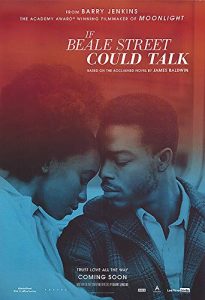It’s that time of year again when the tricolore flutters in the breeze, the air smells faintly of baguettes and the works of Albert Camus are picked from the bookshelf and dusted off. Yes, the French Film Festival is back in town, bringing with it the promise of sweeping romance, high art and a lot of tasteful nudity.
Playing centre stage this year (after making Un Certain Regard at Cannes) is the directorial debut of artist-turned-director Stéphanie Di Giusto. Made with a hefty swig from the bottle of ‘artistic licence’, this is a biopic of dancer Loïe Fuller. While it’s very sure of its own importance and has few fleshed out characters, The Dancer is a stunningly beautiful and richly detailed look at one of the most important artists of the 19th century.
Loïe Fuller (French singer Soko) was a tomboy from the American midwest in 1892, the kind of America with snowcapped mountains, rolling woods of oak trees, and where the men are bred tough. After the death of her father she makes her way to New York. Here she discovers a talent for a new kind of dance she pioneers by wearing a giant white sheet and twirling in it as different coloured lights are projected onto her. With a new kind of dance to show to the world and a fistful of stolen cash, Fuller travels to a perfect haven for new and exciting art forms: France at the height of the Belle Époque.
There isn’t much in the way of original or particularly good story telling here. Characters don’t have a whole lot of nuance and there isn’t much empathy generated for anyone other than Fuller, who is the only major character to 1) be fully fleshed out and 2) not be a total ponce (see: Gaspard Ulliel as Count Louis, Fuller’s love interest). The most interesting aspect is the friendship and then rivalry between Fuller and the beautiful American dance prodigy Isadora Duncan played by the gorgeous Lily-Rose Depp (daughter of Johnny). This is interesting up to a certain point, but it’s unfortunate that the story has clearly been picked and chopped into a simple arch that, upon reading up about Loïe Fuller, doesn’t bare the slightest resemblance to her actual life.
No, we’re not here for the story. Instead we’re gifted with an incredibly beautiful film with dancing scenes that take the breath away. La Belle Époque (literally the ‘beautiful period’) is considered by many to be the golden age of Europe, beginning in the 1870s and ending with the international mass cull of young men known commonly as the First World War. It’s famous for its major advances in science, culture and the arts, a period in which biopics and historical costume dramas have the perfect setting. It’s fortunate then that Stéphanie Di Giusto has got Anaïs Romand on board with her exceptional costumes and complimented them with the cinematography of Benoît Debie.
Fuller’s contribution to dance was to drape herself in a massive white dress and spin around as different coloured lights were projected onto her. The first scene that depicts this is nothing less than jaw dropping and might be one of the finest individual scenes of the year. Soko’s beautiful female form whirls around while the rest of the frame goes dark. It’s like the camera is dancing with her and as Summer from Vivaldi’s Four Seasons plays it’s overwhelming, truly beautiful in that intimate, intense yet tasteful way that the French do so well.
While not having much in the way of original story or compelling characters, the sheer magnificence of the way that The Dancer looks and sounds is well worth checking out. This is a tastefully sexy and beautifully photographed trip into the highpoint of European civilisation which will come as a cinematic treat for any and all lovers of fine art. French cinema has so much appreciation for beauty in the classic sense that it’s enough to forgive the high-nosed pretentiousness that often accompanies it.
The Dancer screens as part of the Alliance Francaise Film Festival from 8th to 30th March. See here for the festival schedule.





